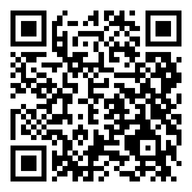Q: Why should my child wear a helmet?
The thought behind protecting your child with a helmet is that some tumbles or collisions can result in head injury. Depending on the energy of the impact, head injury can sometimes be as simple as a scrape or a cut but sometimes it can mean severe brain damage or death.
In a review of the scientific literature, existing studies support a 66-88% reduction of risk of a serious brain injury if in a crash and wearing a helmet. About three quarters of deaths from biking injuries were from head trauma. If the injury evidence is not compelling enough, in many states, it is the law.
Q: Are helmets just for biking?
No – helmets are meant to protect the head when participating in any sport where there is a chance of a fall onto the head, a collision, or when speeds may exceed a fast jog, such as:
- Biking
- Skating (roller, inline or ice)
- Skateboarding
- Scooter
- Snowmobiling
- Skiing
- Sledding
- Horseback riding
Q: How do I pick the right helmet?
First – it’s important to get the appropriate helmet for your sport.
The Consumer Protection Safety Commission has specific guidelines for helmets that you can check on their
website.
To make sure the helmet you pick will fit your child:
- bring her to the store with you
- measure her head for size
- try on several helmets of the appropriate size to find one that feels right
- adjust the fit with the pads or sizing ring
- adjust the side straps with the helmet level on the head, two finger widths above the eyebrow
- buckle and adjust the chin strap so that a wide open mouth pulls the helmet tight
Q: Is it OK for my child to continue to wear his helmet after a crash?
Helmets may be single or multiple impact helmets. If the helmet is a single impact helmet, it should be replaced. In the case of a multiple impact helmet, examine the helmet to see if any of the materials was compromised in the crash, like a cracked shell, dent in the shell or liner, or broken strap. If in doubt, you should check with the manufacturer.

 POSNA.org
POSNA.org

